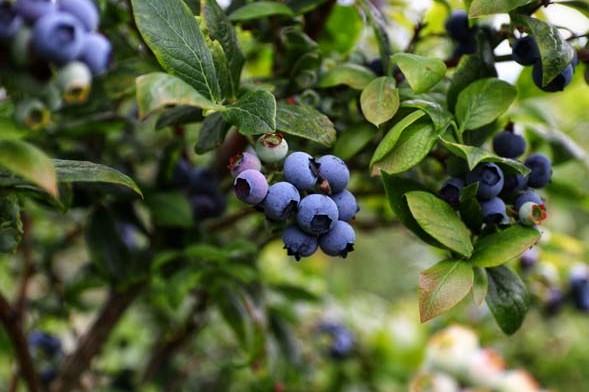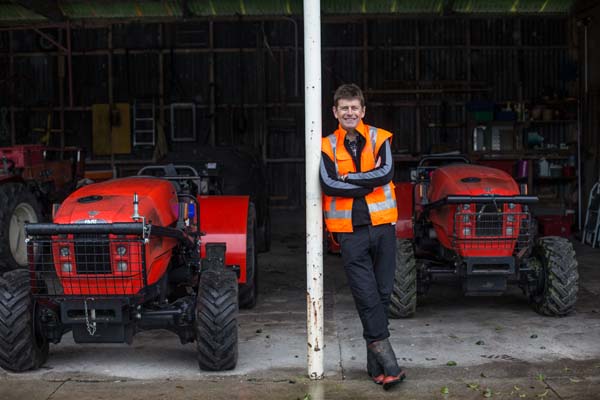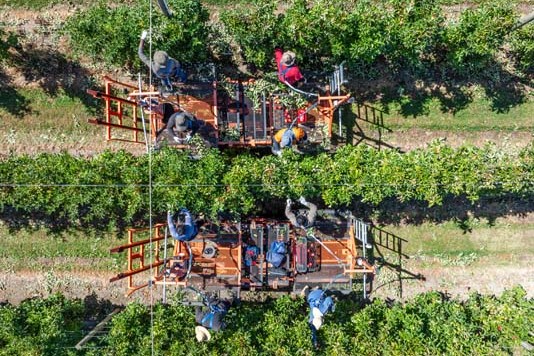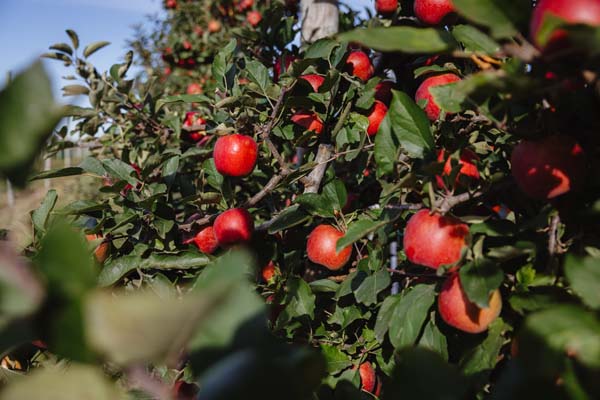Those who decide to diversify their land use could include dairy farmers looking to build additional and complementary revenue streams. By Elaine Fisher.
 For 140 years, dairy farming has been a mainstay of the Taranaki economy and a major player in the region’s social structure. However, it is about to change, thanks to an initiative encouraging new ventures to add value to the region’s economy.
For 140 years, dairy farming has been a mainstay of the Taranaki economy and a major player in the region’s social structure. However, it is about to change, thanks to an initiative encouraging new ventures to add value to the region’s economy.
‘Branching Out’, a project facilitated by Venture Taranaki, has launched nine opportunities focused on diversifying the region’s existing food and fibre offerings, including sheep dairying, kiwifruit, and avocados.
Project lead Michelle Bauer says existing key industries remain critical to the regional economy; however, the newly launched investment blueprints allow the region to leverage its strengths. Michelle expects those who decide to diversify their land use could very-well include dairy farmers who are looking to build additional and complementary revenue streams by unlocking the potential of areas of their property that may be unused, or underutilised, and suitable for horticulture. Taranaki is an emerging growing region – 27 hectares of new kiwifruit plantings are already under development and the region is seen by the industry as having potential for growth as traditional production areas are predicted to shift due to changes in temperatures.
The region is also attracting interest from the avocado industry with new orchards under development. An assessment of the land and climate in Taranaki has identified 270,000ha as suitable for horticulture.
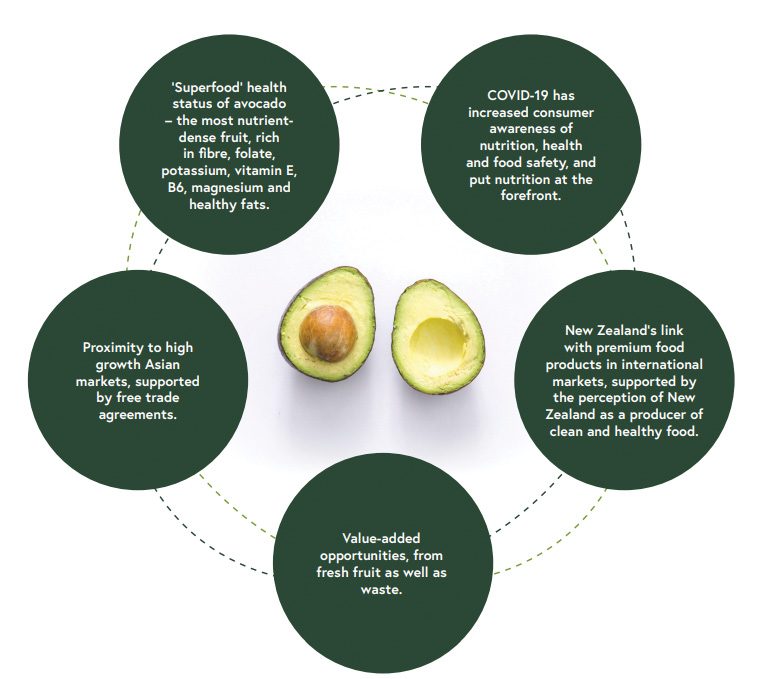 “We have more than 50 growers who have expressed interest in supporting pilot trial activities across a range of ventures,” Michelle says.
“We have more than 50 growers who have expressed interest in supporting pilot trial activities across a range of ventures,” Michelle says.
The other ventures in the blueprint are gin botanicals, grains, legumes and vegetables, hemp fibre for construction, hops, medicinal plants, and trees (and their value chain).
Of the nine opportunities identified through the Branching Out project kiwifruit, avocado, and sheep dairy are likely to be the first to launch, she says.
“All the ventures have significant market potential. In some cases, the path to market is clear, for example with kiwifruit, avocado, or sheep dairy, so these would be considered closer to launch – particularly as there are currently plants in the ground, or sheep milk being sent to the dryer.
“In other cases, the path to market will need to be established such as for gin botanicals or medicinal plants. But in all cases, it is clear that a market does exist, and future trends and consumer preferences support this.
“We are looking for significant scale in new diversification but are aware of people with smaller blocks of land between 10 and 40ha actively looking for horticultural opportunities.”
Carefully managed, land use diversification could have positive environmental and social impacts, Michelle says.
“We are planning a key piece of research around how to measure the environmental, social, and cultural outcomes as industries scale up, and we will be supporting new ventures through education to adopt sustainable operational practices as part of their establishment and growth.”
The nine blueprints, commissioned and published by regional development agency Venture Taranaki, are the culmination of extensive research, analysis, and insights provided by sector stakeholders, partners, support services, and academic institutions. The blueprints contain details about sector opportunities and drivers of growth, required growing conditions, crop management, value chain development, financial assessments, and potential impact for the region (economically, socially, and environmentally). While regions promoting land use diversification is not unusual, what is different about the Branching Out project is that it takes the value chain perspective and provides potential investors with an overview of key decision considerations from commercial establishment, supply and value chains, potential returns, to everything in between.
The nine opportunities the project focuses on were narrowed down from a long list of 96 suggestions.
“We decided to progress the opportunities with high-growth, and strong market potential; alongside opportunities where skills, capabilities, and existing in-region infrastructure that could be applied to an adjacent industry.”
Among locals taking up the challenge is Matthew Hareb, who is developing an avocado orchard on 30ha that was previously part of a dairy farm.
“I’m Taranaki born and bred, and for the last 15 years I’ve run an earth-moving contracting business in the oil and gas industry. I am now looking to diversify and see avocados as the next chapter in the book.
“Avocados felt like the right choice and move as my family has experience and knowledge from owning two orchards in the Bay of Plenty,” he says.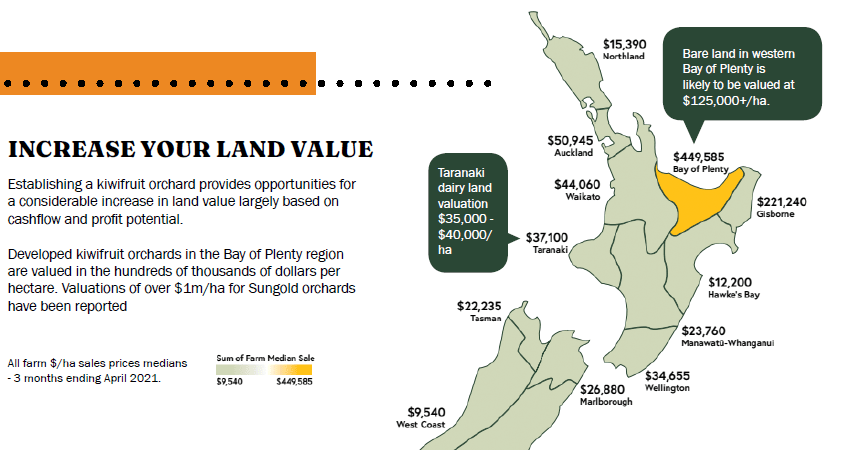
Commercial plantings of Zespri Green kiwifruit have been established near Waitotara in South Taranaki and the blueprint document states there is potential for more kiwifruit development in the region. David and Jo James, of Begin Distilling (makers of Juno Gin) have for some time been championing the growing of juniper berries, orris root, liquorice root, and angelica root, which are ‘core’ gin botanical plants, as an opportunity for Taranaki and have invested in research to help progress their potential.
Keen to see the gin botanical industry flourish, David and Jo have been working with Massey University and others throughout NZ since 2017 and these collaborations have been making steady progress in terms of developing more understanding about these botanicals and the opportunity they represent.
Although all of the four botanicals which are a focus of the Branching Out blueprint are known to be able to be grown in Taranaki, NZ has to date not placed any significant focus on growing these botanicals commercially.
It is hoped the Branching Out blueprint on gin botanicals will stimulate interest in the opportunity and data gathered since the blueprints’ launch, indicates that is happening, Michelle says.
In July there were more than 1000 visits to the Branching Out webpage, up 154% compared with the previous month.
“In addition to the inquiries that we are receiving directly, we can see from our website analytics, that hemp fibre for construction was the most-visited page followed by medicinal plants, gin botanicals, avocados and sheep dairy.”
Venture Taranaki has called for landowners to add their details to the land use register and registrations have increased since the Blueprints launch, due, Michelle believes, to the interest in the opportunities presented.
“As we look towards the second phase of the project, there are opportunities to get involved in pilot activities – so we would encourage those interested to register their information.”
The blueprints, Michelle says, serve to build investor confidence and be an informative roadmap for complementary land-based activities and associated value chain enterprises in Taranaki.
“The investor-ready blueprints are to be used by community including landowners, farmers, food manufacturers, growers, and investors to give them all the information they need to get started.
“We are encouraging these groups to review the opportunities presented by visiting the Venture Taranaki website, downloading the blueprints, and joining our land use registry so that we can connect them to others and share information on the ventures that are of interest.”
The region’s three district councils have funded the first phase of Branching Out; New Plymouth District Council, South Taranaki District Council, and Stratford District Council, along with funding from the Ministry for Primary Industries.
“Our councils are supportive of the Branching Out project, and as ventures progress, we will continue to work closely together.”
For more information visit: www.venture.org.nz/projects/branching-out


